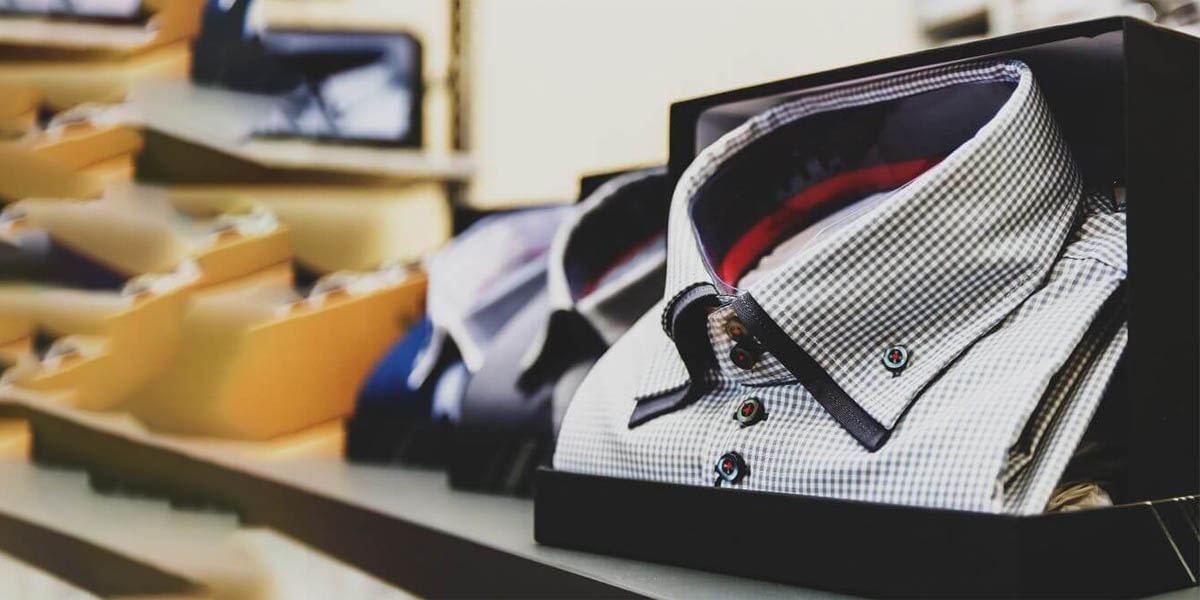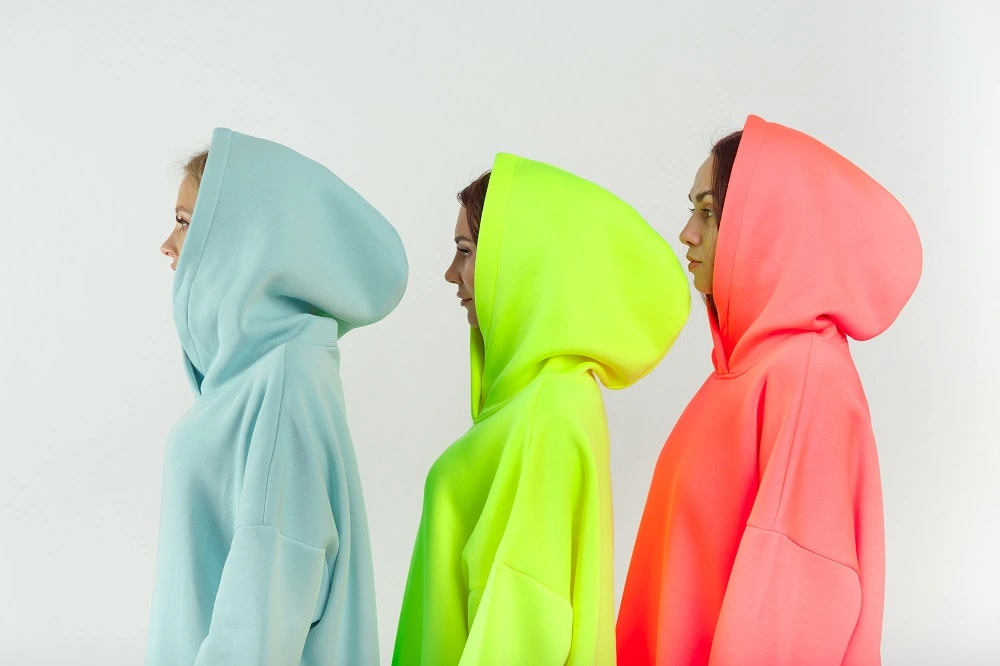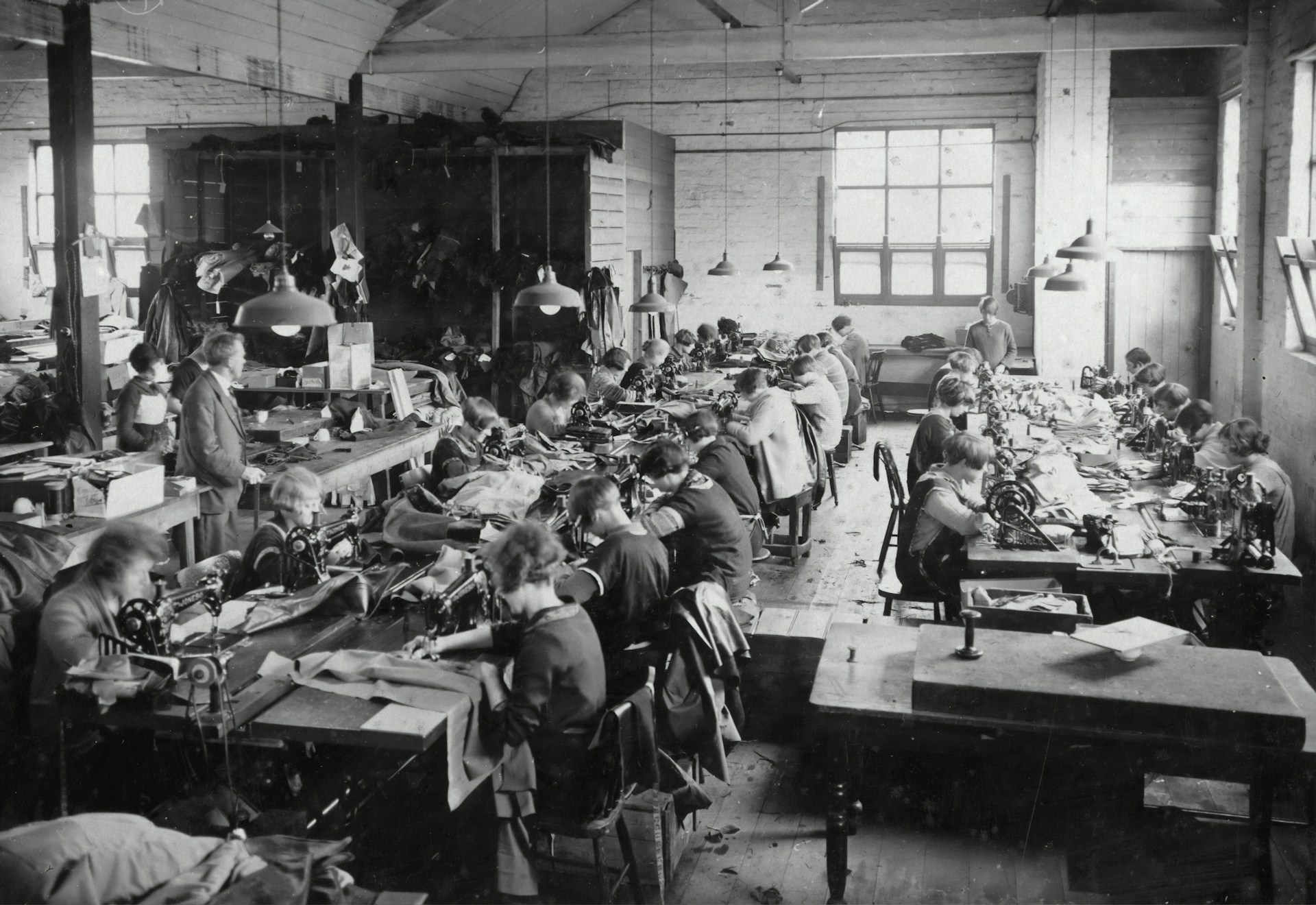Ever wondered how much does it cost to make a shirt? The response is not as straightforward as you may believe. There is more to it than simply fabric and thread! In this blog post, we will analyze the main elements that impact the cost of producing a shirt, providing you with a better understanding of the manufacturing process. By the conclusion, you will be equipped to make more informed choices regarding your apparel collection and receive optimal value for your investment. Are you prepared to immerse yourself? Let’s begin!
Key Cost Components Of Shirt Production
Examining different factors that contribute to the average cost of a shirt is crucial in understanding the cost of a shirt. Every part is important, from the materials to the labor, and the production overhead costs. This part will analyze these important cost elements to give a better understanding of the expenses in shirt production.
Materials
Fabric: Types, quality, and cost variations
Fabric represents the highest expense in the production of shirts. Various fabrics, including cotton, polyester, and blends, are priced differently. Superior comfort and durability are provided by higher quality fabrics such as Egyptian cotton or organic materials, despite their higher cost. Selecting the type of material greatly influences the total expenses associated with making a shirt.
Trims and accessories: Buttons, zippers, labels, etc.
Buttons, zippers, and labels, along with trims and accessories, increase the overall cost to make a T-shirt/shirt. The items can vary in quality and style, where premium choices will raise the price. Moreover, special or personalized trims can also increase the costs.
Packaging materials: Bags, tags, etc.
Packaging items like pouches and labels also add to the overall expense. Although they are frequently ignored, these items are crucial for presentation and branding. Choosing sustainable or personalized packaging might come with a higher price tag but it can improve the perceived worth of the product.
Labor
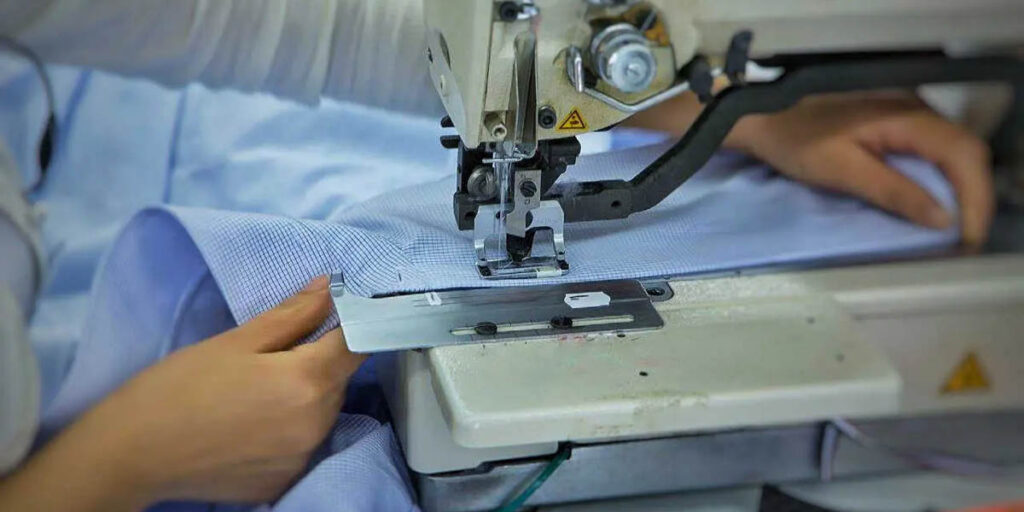
Sewing and assembly: Labor costs in different regions
Labor is an essential component of the costing of a shirt. Shirts need skilled labor for sewing and assembly, and costs differ greatly based on the region. Nations with reduced labor expenses can manufacture shirts at a lower cost, however, this frequently results in compromising working conditions and product quality.
Skilled vs. unskilled labor
Costs are influenced by the differentiation of skilled and unskilled labor. Highly skilled workers who possess the ability to do detailed sewing and guarantee better quality, require higher pay. On the other hand, using unskilled labor is more affordable but could lead to decreased quality and increased defect rates.
Production Overheads
Factory costs: Rent, utilities, maintenance
Production overheads are comprised of expenses related to operating a factory, such as rental fees, utilities, and upkeep. The costs are essential to maintain the functionality of the production line and may differ depending on the manufacturing facility’s size and location.
Equipment and machinery: Depreciation, maintenance
Another major cost to make a t-shirt/shirt is the cost of equipment and machinery, which also includes their depreciation and upkeep. Purchasing top-notch equipment can enhance productivity and decrease expenses in the long run, although the upfront costs are significant.
Design and Development
Costs of creating patterns and prototypes
Creating designs and prototypes during the design and development process results in additional expenses. This phase is important to guarantee that the result adheres to quality and design criteria. The development cost of a t-shirt/shirt increase as the complexity of the design increases.
Designer fees
Employing skilled designers for unique and stylish shirt designs increases the expenses. Designers who have built a solid reputation or have many years of experience charge higher fees due to their expertise and creativity.
Quality Control
Inspection and testing costs
Before reaching the consumer, every shirt goes through quality control to ensure it meets set standards. Inspection and testing are necessary expenses to uphold product quality and keep customers happy.
Ensuring compliance with industry standards
Following industry guidelines and regulations is required and comes with extra expenses. This adherence guarantees that the shirts are secure, morally sound, and of superior quality, safeguarding both the brand and the consumer.
External Factors Affecting Costs
When you ask “How much to make a shirt?”, it is also important to understand the external elements that impact the production expenses of manufacturing a shirt to make well-informed choices. These variables have the potential to greatly affect the end cost, impacting various aspects such as sourcing materials and production efficiency. Let’s explore the primary external influences impacting shirt production expenses in 2025.
Economic Factors
Inflation and Currency Fluctuations
Rising inflation can increase the expenses associated with raw materials, labor, and other production inputs, causing the price of producing a shirt to rise. Furthermore, changes in currency values can influence global commerce by altering the expenses associated with importing raw materials and exporting final goods. Monitoring economic trends can assist you in predicting and handling these fluctuations in expenses.
Trade Policies and Tariffs
Trade policies and tariffs can greatly affect the expenses associated with manufacturing. Alterations in trade deals or the implementation of additional tariffs may raise the expense of importing raw materials or exporting finished goods. Keeping up to date with trade regulations can assist you in dealing with these obstacles and discovering economic resolutions.
Supply Chain Issues
Raw Material Availability and Pricing
The cost to make t-shirts in bulk depends heavily on the availability and pricing of raw materials. Supply chain interruptions, like fabric shortages or increased demand, may cause prices to rise and production to be delayed. Developing solid connections with suppliers and expanding your sources of supply can help reduce these risks.
Transportation and Logistics Costs
Transportation and logistics expenses are crucial in determining the average price of a shirt. The final price may be affected by fuel costs, transportation charges, and the effectiveness of logistics. Improving your supply chain efficiency and considering different transportation options can cut expenses and enhance your profits.
Technological Advancements
Automation in Manufacturing
Incorporating automation into manufacturing operations can lead to a substantial decrease in labor expenses and enhance production effectiveness. Automated systems can perform tasks like cutting, sewing, and quality control more accurately and quickly. Investing in automation can result in reducing costs over time and gaining a competitive advantage in the market.
Impact on Labor Costs and Production Efficiency
Technological advancements do not just reduce labor expenses but also improve overall production efficiency. Sophisticated equipment and programs can optimize processes, minimize inefficiencies, and enhance the quality of products. Keeping up with current technological trends can assist in sustaining a cost-efficient and productive manufacturing operation.
The Real Cost to Have Shirts Made (In Numbers)
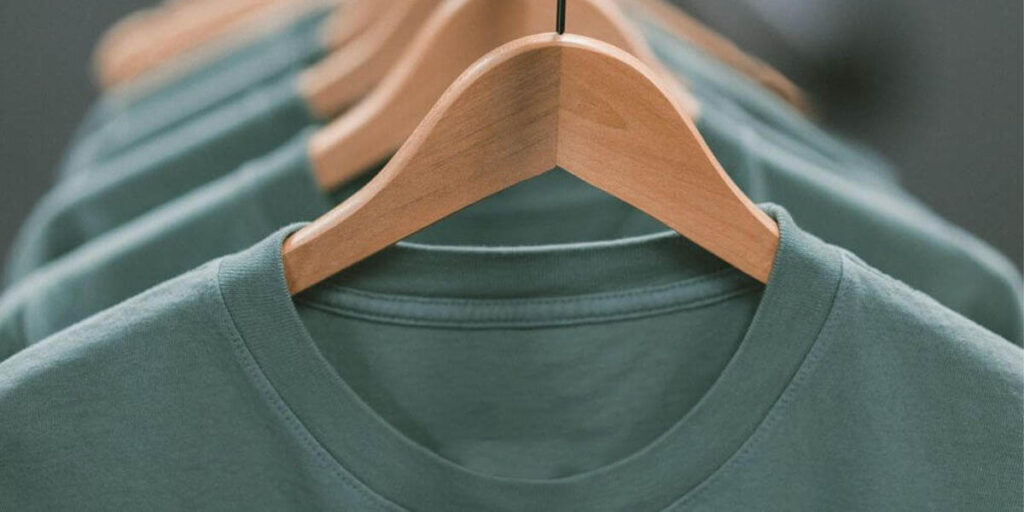
Raw Materials
When considering how much do shirts cost, it is important to focus on the materials used in making the shirt. The shirt’s look and feel are dictated by the material it is made of. Buttons and thread are essential for the final touches, making it more than just the fabric. Opting for better quality fabric is like picking organic ingredients for your meals; the distinction is evident, but comes with a higher price.
A fancy garment can appear more attractive with elaborate buttons and intricate stitching. Essentially, the process of making a shirt begins with the materials. The cost of raw materials per shirt can range from $1.50 to $3.59, based on the desired level of quality and fanciness.
Labor
Labor drives the production of shirts. The creation of a shirt involves multiple stages of production, starting from design and ending with cutting and sewing. Finding the right clothing manufacturer can impact the shirt’s quality, similar to having an experienced chef in the kitchen.
Nevertheless, we must also take into account the individuals responsible for producing the shirts. Simultaneously, they might be more expensive, and it is crucial to ensure safe working conditions. Wages for labor can range from $0.19 to $2.10 per shirt. Labor factors have a significant impact on the t-shirt cost of production.
Overhead Costs
The unseen costs related to running a factory are comparable to overhead expenses. The plant operates using all of its expenses, such as rent and electricity. Another factor to consider is the whereabouts of the factory. The expensive nature of specific areas could influence the price of the shirt. An efficient factory helps to maintain a low average cost for shirts. The expenses above the actual costs may range from $0.29 to $1.12 per shirt.
Marketing and Distribution
Distribution and advertising transport the shirts from the producer to your closet. It includes packaging for protection, marketing for awareness, and branding for a positive image of the clothing.
Expenses related to the logistics of the supply chain, such as transportation and warehouse costs, play a crucial role in the total expenses incurred in producing t-shirts. The total expenses for each shirt can range from $5.39 to $6.00.
Hidden Costs
When we ask “How much does a custom shirt cost?”, we also need to consider the hidden costs. There are currently several additional costs that must be taken into account when calculating the total expense of producing a shirt. Quality control is essential in ensuring the shirt is perfect, even though it may add a little extra expense. The prices of t-shirts can change based on the requirements and accreditations that the manufacturing process needs to meet.
Moreover, it is important to always show kindness towards the earth. Some companies focus on creating environmentally friendly shirts, which could affect the price as well. These undisclosed costs are hidden from view.
The Cost of Printing on T-Shirts
T-Shirt Printing Cost Depends On Order Quantity
Determining the average t-shirt cost of printing is heavily dependent on the quantity ordered. Anticipate moderate prices when purchasing a small amount; plan on spending $20 to $30 per shirt.
If you plan to produce a T-shirt for your use, this price range would be perfect. Nonetheless, it is highly inefficient if you plan to distribute or sell them. If you buy 50 or more shirts, each shirt will cost you between $5 and $10; if you order more than 100 shirts, the average price per shirt is around $5.
Hence, it is advisable to maximize your buying decision but be careful in your approach. You could lose money by buying too many. This is especially important if you plan to collect money from your organization’s members for their shirts or if you’re selling them.
Extra Features Cost Extra Money
It is crucial to remember that white T-shirts are typically the most cost-effective when calculating the production cost of a shirt. Unfortunately, it might not contribute significantly to the distinctiveness of your T-shirt. Using these shirts for advertising is not a wise decision.
Therefore, consider investing more money in printing colorful shirts. For lower amounts, the cost gap is $5; for higher quantities, it is $1. Make sure to ask about pricing before purchasing as some companies do not have higher prices for colored shirts.
If you’re curious about the price of t-shirts, remember that many businesses have additional fees for printing with multiple ink colors, and using two or more colors could increase the T-shirt’s cost by $2-$3. Hence, it’s recommended to opt for a straightforward yet attention-grabbing layout.
Choosing to print a design on both sides of the T-shirt will raise the cost of your custom T-shirt by about $5 per shirt. This method has the benefit of making your design visible from any angle, although it does require extra payment.
Shipping Is, Of Course, Not To Be Overlooked!
When calculating how much is it to make t-shirts, it’s important to keep in mind that most online t-shirt designers offer complimentary shipping. Nevertheless, there’s a downside – the cost of shipping is usually included in the price of the shirt.
Although free shipping may be attractive, it’s important to factor in the total expense. At times, it could be cost-effective to cover the shipping costs to achieve a reduced per T-shirt price. Make sure to carefully consider all pricing options for t-shirts before making a decision.
Strategies to Optimize Costs
Maximizing efficiency in shirt production is essential for maintaining profits and staying competitive in pricing. Businesses can lower costs while maintaining quality by implementing successful strategies. Below are a few important methods to take into account:
Sourcing Efficiently
Begin by finding trustworthy suppliers who offer top-notch materials at competitive rates to lower expenses. Developing solid connections with these vendors can result in improved agreements and more reliable distribution networks. Assess suppliers by reviewing their previous performance, production capacity, and customer reviews to guarantee they align with your requirements.
Purchasing items in large quantities can greatly reduce the cost per individual unit. You can lower costs on fabric, trims, and other essential items by combining orders and bargaining for large discounts. Moreover, it is advisable to collaborate with other companies to place combined orders, which will strengthen your bargaining leverage with suppliers.
Streamlining Production
Utilize lean manufacturing methods to reduce wastage and enhance productivity. By concentrating on activities that add value and cutting out unnecessary processes, you can make production more efficient and lower expenses. Methods like JIT inventory management, continuous improvement (Kaizen), and value stream mapping can be useful in pinpointing and resolving inefficiencies in your production line.
Reducing waste is essential for cost optimization. Introducing methods like reusing scrap materials, improving fabric-cutting designs, and educating employees on effective work techniques can greatly lessen waste. Reducing material waste and maximizing resource utilization can help decrease total production expenses.
Investing in Technology
Investing in automation has the potential to result in significant long-term cost reductions. Automated systems, such as those used for cutting, sewing, and quality control, have the potential to boost production speed and precision, all while cutting down on labor expenses. While the upfront cost may be steep, the future advantages of improved productivity and reduced operational costs justify it.
Using digital tools in design and production planning can make processes more efficient and lower expenses. CAD software enables precise pattern creation and simple alterations, minimizing the necessity for physical prototypes. Moreover, software for production planning can enhance scheduling, monitor inventory, and oversee workflow, resulting in improved allocation of resources and decreased production durations.
Is It Profitable To Make T-shirts?
The amount of profit from producing T-shirts can greatly differ depending on factors such as production size, material and labor expenses, pricing tactics, and customer demographic. Here are some factors to take into account:
- Material Costs: The profitability can be significantly impacted by the expenses related to materials, like fabric and printing materials. It is crucial to procure affordable materials of high quality.
- Labor Costs: Labor expenses, such as design, cutting, sewing, and quality control, have a substantial impact. Costs can be managed with efficient production processes and skilled workers.
- Economies of Scale: Massive production usually results in decreased costs per unit. If you can manufacture T-shirts in large quantities, your profit margins could be better.
- Pricing Strategy: The way you set prices for your T-shirts is extremely important. Balancing your costs, profits, and competitiveness when setting a price is a delicate task.
- Niche and Target Market: Discovering a specific market or unique selling point (USP) has the potential to increase profits. Meeting individual consumer needs or preferences can result in increased pricing.
- Competition: Profitability in the T-shirt market can be influenced by the level of competition. To succeed in a competitive market, one may need to implement bold pricing and marketing approaches.
- Distribution and Sales Channels: Think about how you will distribute your product. Selling products directly to customers via an online store or brick-and-mortar shop can result in greater profits than selling in bulk to retailers.
- Cost Management: Enhancing cost control, minimizing wastage, and maximizing operational productivity can enhance profitability.
What Is The Cheapest Way To Start A T-Shirt Business?
Starting a t-shirt business with minimal investment is made easier by utilizing Print-on-demand (POD). Print-on-demand services take care of printing and order processing, allowing you to concentrate on designing and marketing your products. This helps reduce initial expenses and decreases the chance of potential dangers.
Build a Sustainable and Profitable Shirt Brand
Having a grasp of the details of shirt manufacturing costs enables you to make knowledgeable choices for your fashion brand. You can achieve a mix of cost-effectiveness and quality by strategically obtaining materials, streamlining processes, and optimizing your supply chain. Keep in mind, that a responsibly and environmentally produced shirt can be a successful business opportunity that appeals to modern ethical consumers. Ready to start a clothing brand? Contact Weft Apparel today for a personalized free quote and expert guidance on crafting high-quality shirts at competitive prices.

